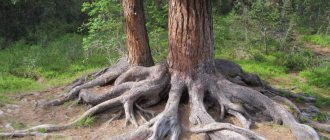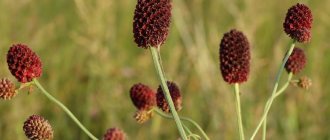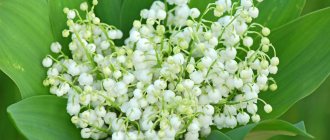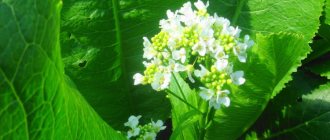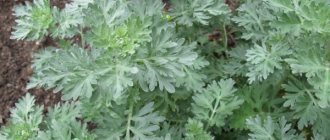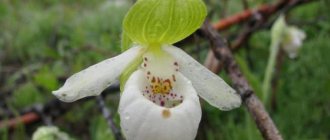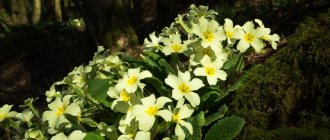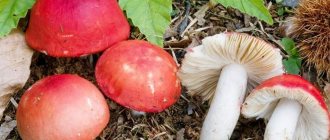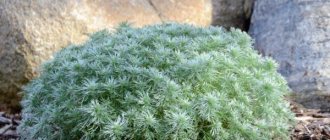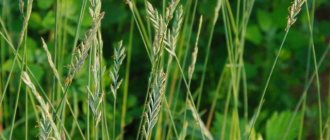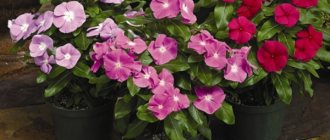- August 19, 2018
- Greens and herbs
- Natali Michaelis
Annual wormwood has a rich chemical composition, which determines its medicinal properties. This plant with a bitter taste and a rather specific smell will be familiar even to those people who do not understand herbs. Even in ancient Rome, it was used to strengthen the walls of the stomach, and in China it was worn on sandals, believing that in this way one could restore appetite after a serious illness. Many travelers took wormwood with them on long journeys because it helped avoid unpleasant symptoms of seasickness. And in many nations there were beliefs that the plant drives away evil spirits from a person if you make an amulet from the grass and hang it on the door of the house.
What are the medicinal properties of annual wormwood? This herb is mostly known for increasing appetite. Even doctors recommend taking it to patients who have undergone surgery on the stomach or intestines. However, few people know that this plant also helps fight cancer. Therefore, it’s time to stop treating it as an ordinary weed a long time ago.
Photo and description of annual wormwood
Have a hard time imagining what this medicinal plant looks like? In our article you will find many photographs of the miracle herb, and also find out what medicinal properties it has.
You can recognize bitter (annual) wormwood by its rather sharp, but at the same time pleasant aroma, as well as the whitish color of the leaves. Small pale yellow flowers are collected in panicle-shaped inflorescences. The flowering period begins in July and lasts almost until the end of August. This time of year is best for preparing raw materials for the winter.
Wormwood in folk medicine
This bitter plant has found use in folk medicine in many countries. For medicinal purposes, Chernobyl is collected from July to September. The raw materials are dried naturally in well-ventilated but dark places.
Once upon a time, crushed fresh wormwood leaves mixed with egg white were applied as a compress to bruises and wounds. Wormwood juice lotions were used to treat sore eyes. Herbalists treated stomach ailments and bad breath with Chernobyl infusions. The same medicine was given to people with any liver disease.
Infusions and tinctures from this herb were used to treat the stomach, drank in case of lack of appetite, chronic gastritis and intestinal diseases caused by decreased secretory activity of the stomach. In addition, wormwood was used to treat flatulence, intestinal colic, pancreatic dysfunction, and wormwood infusion was used to remove parasites, including lice and intestinal parasites.
Known plant species
Have you ever wondered where annual wormwood grows? First, you should find out how many varieties of this plant can be found in nature. In fact, there is a lot, but most people know only annual wormwood (artemisia annua), which can be found almost throughout Russia, especially in arid regions. It is worth noting that some types of this herb are poisonous, so it must be used as a traditional medicine with extreme caution. In total, there are about 400 species of this plant in nature.
- Tarragon is one of the types of annual wormwood, which is actively used in cooking. The unique taste and unique aroma of this plant give dishes an exquisite taste. Tarragon is also used in winemaking.
- A rather interesting type of medicinal herb is the so-called “God’s tree”. In some summer cottages it can be found as an ornamental plant. The smell of this herb is slightly different from annual wormwood.
- Wormwood and bitter wormwood are two varieties that bring maximum benefits to the human body. They are similar not only in appearance, but also in their medicinal properties. They are found almost everywhere in nature. These medicinal herbs are used to prepare oils, decoctions and tinctures that help fight a huge number of different diagnoses.
How to distinguish annual from perennial wormwood? To do this you will need to look at the root system of the plant. An annual grass has no buds, and buds, as you know, are an indicator of longevity. In appearance and smell, the herbs practically do not differ from each other, but the medicinal properties of annuals are much higher. Therefore, if you decide to make a decoction or infusion from a medicinal herb, it is recommended to use wormwood.
Description of the plant
Wormwood is a plant well known to mankind since ancient times. It was used for economic and magical purposes, and then for medicinal purposes. This herbaceous plant belongs to the Astrov family and is conventionally divided into low-growing and tall varieties. The name of the herb is associated with the name of the ancient Greek goddess Artemis; wormwood is also called “evshan”.
The habitat of this wild plant is the temperate climate zone of Eurasia, as well as Africa and North America. Wormwood looks different, depending on its subspecies. Some varieties of plants are annual, others are biennial; among these representatives of the Aster family there are also perennial herbaceous wild plants. They all have a specific strong odor.
Different varieties of wormwood differ depending on the location of their leaves, as well as the shade of the flowers. The plant blooms with small flowers of pink, white or yellow, collected in lush baskets. The color of the leaves varies from light green to bluish and even steel. All varieties of this herbaceous wild plant are not particularly demanding on growing conditions and can survive without water for a long time.
Tall wormwood varieties include:
- Wormwood Gmelin;
- Wormwood (a very common subspecies), its photo:
- Louisiana sagebrush;
- Artemisia milkiflora;
- Artemisia annual;
- Wormwood Rutofolia.
Low-growing varieties of wormwood are represented by the following types:
- Schmidt's Wormwood;
- Steller's Wormwood;
- Artemisia;
- Wormwood is brilliant;
- Wormwood is cold.
In herbal medicine, wormwood, also called wormwood, or true wormwood, is most often used. In Latin, its name sounds like Artemisia absintium L. People also know the name Chernobyl.
Official medicine recognized this plant as medicinal in the middle of the century before last, and its antitumor properties were discovered in the 50s of the twentieth century.
Chemical composition
The main value of wormwood is its essential oil, since it contains a huge amount of useful microelements. Among them: borneol, pinene, cadinene, cineole, camphene, alcohols, butyric and acetic acid, camphor. In addition to all of the above, there is a small amount of alkaloids, tannins and ascorbic acid.
An interesting fact is that a special substance called the sesquiterpene lactone artemisinin is isolated from this plant - the main ingredient for the preparation of anti-malaria drugs. Accordingly, wormwood can be used to prepare ointments for this ailment.
Other uses of wormwood
Wormwood is used in the production of alcoholic beverages
Different varieties of wormwood are used not only for medicinal purposes. They are widely used in cooking and the production of alcoholic beverages. The tarragon variety is included in the popular soda tarragon. The famous drink absinthe is made from this herb. It contains about 15 components: anise, coriander, parsley, mint, calamus, fennel, chamomile, speedwell, licorice, lemon balm, etc.
It is believed that thujone, which is part of wormwood, is a drug-containing compound that causes poisoning, hallucinations, and schizophrenia. For a long time, the drink was banned in many European countries; people received prison sentences for its production and possession. But to date there is no evidence that this particular substance provokes undesirable effects. Since the end of the last century, absinthe began to be produced and sold again. Czech-made bottles were the first to appear on the market, then they began to be made in Britain, France and other countries. The thujone content was limited to 35 mg/kg (in the USA - to 10 mg/kg).
Essential oils and extracts are used in perfumery. For the production of perfume, aromatic lemon and tavriche wormwood is used. The strong smell of the grass repels insects and parasites. It is used against fleas, bedbugs, lice, mosquitoes, aphids, cockroaches and even mice. They hang a broom in the house, spray the corners or scatter grass around the apartment, and try to fumigate the room. The plant does not kill pests; treatment only prevents their appearance in the house.
Collection rules
The main place where wormwood grows remains in the countryside. Here you can find medicinal herbs almost everywhere: in vegetable gardens, on roadsides, in courtyards, along forest paths, in meadows, wastelands and even pastures. In short, you definitely shouldn’t have any problems finding a plant. However, the preparation of medicinal herbs has its own subtleties.
- Wormwood must be harvested before it enters the flowering period. At this time, the plant must be cut completely to the roots. The second time the “harvest” is collected during the flowering of wormwood. It is necessary to collect only the tops (no more than 20 centimeters). If you follow this simple rule for collecting medicinal raw materials, the concentration of useful substances will reach a maximum.
- In autumn, it is allowed to collect only wormwood roots. But you don’t have to dry them, but just rinse them with running water to remove dirt and peel them.
- It is worth refraining from collecting wormwood near residential buildings and roads, since in these places there are a large number of toxins in the air, due to which the medicinal plant loses some of its beneficial properties. Go for raw materials only to environmentally friendly places, untouched by civilization.
- Try to cut only those plants that are just beginning to bloom. If you are at least a week late in collecting medicinal herbs, you may not get such a pronounced therapeutic effect from the use of infusions and decoctions.
- Don't be lazy to get up early in the morning to go for raw materials, as this is the best time of day to collect wormwood. It is advisable to wait for sunny, warm weather a few days before the “harvest”.
Immediately after collection, medicinal plants are sent for drying. This is best done in a dark place with high air temperatures, such as an attic. However, not everyone has the opportunity to use an attic, especially urban residents. In this case, a regular oven preheated to a temperature of 50°C will help. Properly dried raw materials can be stored for two years or more.
Collection and procurement of raw materials
When preparing medicinal raw materials of wormwood, certain rules must be followed so that its healing qualities do not disappear during drying and storage. Usually the foliage, flowers and roots of this perennial are harvested. The stems are collected only after flowering ends, the foliage is collected before flowering begins, and the roots are dug up immediately after the stems are collected.
Medicinal wormwood
The collected raw materials are thoroughly washed and dried in the fresh air under a canopy or in a well-ventilated area.
It should be remembered that the sun's rays are harmful to raw materials - they provoke the breakdown of vitamins in wormwood.
Dried parts of wormwood should be stored in a glass container with a lid. The healing properties of the raw materials are preserved for 2 years.
The healing properties of wormwood
Annual wormwood, the description and photo of which you could see above, has a number of medicinal properties with a fairly wide spectrum of action. It is worth noting that the medicinal herb is used in both folk and traditional medicine. Here is just a small list of what bitter wormwood helps fight:
- The medicinal plant is prescribed for obesity, as well as metabolic disorders in the body. Excellent fight against parasites and viral infections in the intestines.
- Annual wormwood has anti-cancer properties against cancer. In this regard, folk remedies based on medicinal herbs provide good auxiliary treatment for a terrible diagnosis.
- During pregnancy, seeds of annual wormwood in small quantities will help overcome toxicosis. However, the decoction should only be used after consultation with a specialist.
- The analgesic properties of the medicinal plant make it possible to recommend wormwood for severe headaches and painful menstruation, and rinsing your teeth with a decoction of the medicinal plant will not only relieve pain, but also eliminate inflammation.
- In medicine, there are known cases of cure for tuberculosis with the help of folk remedies, which included annual wormwood. However, the decoction also contained a small amount of white wine and honey, so we cannot say for sure that it was wormwood that helped cure a serious respiratory tract disease.
Also, various weeds, including wormwood, help raise the overall tone of the body. You just need to be able to properly prepare a decoction of medicinal herbs and know the required dosage.
The healing qualities of wormwood
The herb has a lot of beneficial properties due to the huge amount of highly active ingredients it contains:
- essential oils;
- tannins;
- organic acids;
- micro- and macroelements;
- carotene;
- ascorbic acid and other substances.
Herbal healers and simply connoisseurs of traditional medicine recipes, proven over centuries and experience, use wormwood to cure a huge number of diseases. Preparations from it are used as:
- antiseptic, disinfectant, disinfectant agents;
- as choleretic, anthelmintic and diuretic agents;
- for anti-inflammatory and analgesic purposes;
- as anticonvulsant and antimalarial medications;
- may have a cardiac stimulating effect;
- For those suffering from insomnia, the herb helps in the form of a simple sleeping pill.
In addition to folk healing, wormwood is used as an ingredient in pharmacological production and is used in classical therapy.
The herb has been used in a variety of areas: it heals nerves and many organs. Most often, plant products support problems with the digestive system, as they stimulate the functions of the pancreas and eliminate inflammation of the intestinal mucosa.
Wormwood against parasites
Quite a lot of people are interested in the question of how to properly drink wormwood against parasites. For these purposes, you can take special infusions, but for greater effectiveness it is also recommended to do wormwood-garlic enemas. The treatment method is quite simple. First you need to get rid of the irritating properties of garlic, which is part of the decoction. To do this, keep the cleaned head in a water bath for 20 minutes. You should prepare two glasses of wormwood decoction in advance. After 20 minutes, they are mixed with garlic broth. This mixture is used as an enema liquid. The course of treatment lasts several days.
Types of wormwood
The plant belongs to the order Asteraceae, the family Asteraceae (Asteraceae), and the genus Artemisia. The Latin name - Artemisia (artemisia) - is given in honor of the ancient Greek goddess Artemis, whose symbol this herb was considered. Different peoples give wormwood other names. For example, the Turkic name is Yevshan or Chernobyl (bitter star).
The genus includes more than 400 species, 170 of them grow in Russia and in neighboring countries of Asia and Europe. There are widespread and rare varieties. Some of them are cultivated as ornamental or medicinal, for the production of medicinal products. The plant blooms and has original leaves, which is why it is becoming increasingly popular among landscape designers. Wormwood began to be often planted in city flower beds and in flower beds near houses.
Species are conventionally divided into tall and short. Tall ones reach 1-2 m, have a bushy stem, grow on plains and steppes. Low-growing ones do not grow more than 20-40 cm; they are common in mountainous areas with poor soil.
Known tall varieties:
- ordinary;
- bitter;
- gmelin;
- Louisiana;
- milky-flowered;
- annual;
- rutifolia;
- lemon;
- tarragon (tarragon);
- spreading;
- Djungarian;
- citvar;
- medicinal (fragrant).
Popular low-growing species:
- Schmidt;
- Steller;
- field;
- shiny;
- cold (stone);
- white earth;
- few-flowered (black);
- Tauride;
- Austrian;
- Caucasian;
- broadleaf;
- dwarf.
Wormwood, whose range is the entire Northern Hemisphere, also covers South Africa. The distribution is wide, it is found everywhere. Loves open areas. Kazakhstan and southern Ukraine are known for their entire thickets. The plants are unpretentious and grow even on the poorest soil or rocky soil. They inhabit wastelands, rocks and mountains.
Lemon wormwood grows at higher elevations in Central Asia. This plant was described in the 20s of the last century. Now the lemon-scented herb is grown in flower beds.
Not only lemon wormwood is endemic. Gmelina grows in the Far East; it is not found anywhere else. Tauride is found only in the Crimea and in the steppes of the southern regions of Ukraine.
Tea to normalize digestion
If you experience abdominal discomfort: bloating, flatulence, nausea and gas, then you should undergo a course of treatment with tea made from annual wormwood. To do this, mix 1/4 cup of boiling water with a teaspoon of dry wormwood. After which the drink is infused for 10 minutes and consumed 3 glasses per day. The tea will taste bitter, but it is highly effective in combating abdominal discomfort. Wormwood tea also helps fight kidney stones, gallstones and jaundice.
Bitter wormwood - medicinal properties and contraindications
Studying what white wormwood is, its medicinal properties and contraindications, scientists note such a characteristic feature as the strong bitterness imparted by glycosides. Therefore, this plant is also an excellent remedy in the fight against flies and cockroaches; if you spread the grass on the floor and wash the floor with the broth, the insects will go away.
Thanks to its strong antibacterial composition, both the infusion and decoction of wormwood can cope with such a complex illness as herpes:
- Brew 1 tbsp. boiling water 1 teaspoon herbs, leave for 15 minutes.
- Drink 5-6 drops three times a day.
- At the same time, apply lotions to the sore spot, preferably in the morning and evening.
A powerful set of components makes the plant prohibited for pregnant women, as it can cause miscarriage. It should not be consumed by nursing mothers, otherwise the milk will become bitter.
What are the medicinal properties of bitter wormwood:
- suppresses inflammation, viruses and fungi;
- improves bile flow and food digestion;
- heals wounds, restores tissue;
- removes waste and toxins;
- acts as a pain reliever;
- strengthens blood vessels, equalizes pressure;
- fights any tumors.
Wormwood - medicinal properties
Particularly valued in the list of medicinal properties that wormwood has is anthelmintic, wormwood infusion helps remove roundworms, lamblia, pinworms, and is used in the treatment of opisthorchiasis. It has a positive effect on diseases of the liver and gall bladder, colitis, intestinal inflammation, and pancreatitis. It also eliminates heartburn and removes toxins after poisoning.
There are other ailments on this list that wormwood helps with:
- affected joints, dislocations, sprains, gout - apply rubbing to relieve pain;
- nervous system disorders – relieves chronic fatigue, insomnia;
- skin lesions, warts, papillomas - tinctures are diluted in half with water for compresses;
- uterine fibroids, ovarian inflammation, menstrual irregularities, menopause - prepare decoctions;
- atherosclerosis - make a herbal mixture;
- dandruff, brittle hair - rinse strands with infusions.
Bitter wormwood - contraindications
But for all its abilities, white wormwood also has contraindications. It also requires extremely careful use, since it is considered poisonous; an overdose can cause convulsions, hallucinations, and mental disorders. Therefore, not only pregnant and nursing mothers, but also children under 12 years of age should never be given it.
Medicine based on wormwood should not be used for:
- thrombophlebitis;
- anemia;
- gastritis with low acidity;
- internal bleeding;
- acute digestive diseases;
- allergies;
- mental illnesses.
Herbal syrup
A special syrup can be prepared from bitter wormwood, which will have an effective effect on the body for diseases of the stomach, liver and kidneys. To do this, you will need to take 100 grams of dry wormwood, soak it for 24 hours in cold water, and then boil it for about 30 minutes over low heat. It is important that the container with the decoction is tightly closed with a lid. After half an hour, add about 400 grams of sugar or honey to the pan and continue to cook the syrup for another 15 minutes. This folk remedy is consumed 3 times a day, one dessert spoon half an hour before meals.
Infusion to increase appetite
For eating disorders caused by severe operations, a therapist may prescribe wormwood tincture. To prepare it you will need to take 70% alcohol and a little dry wormwood. The ingredients are mixed in a ratio of 1:5, after which the tincture is stored for 21 days in a dark place. Before using it, you should strain it thoroughly. Take 20 grams once a day. This remedy not only increases appetite, but also helps fight gastritis with low acidity.
Artemisia juice
What about a folk remedy for joint pain? Most people suffering from this illness have learned from their own experience that it is quite difficult to cope with unpleasant symptoms. However, the medicinal properties of young wormwood can even fight salt deposits that accumulate in our body over the years. To do this you will need to make a special compress. Rub the juice of the young grass onto the problem area, then wrap it in plastic wrap and secure it with a bandage. This compress should be done before bed so that it is properly absorbed overnight. The procedures are possible both during the period of exacerbation of the disease and for preventive purposes. Do not forget to monitor your diet in parallel in order to normalize salt metabolism in the body.
We hope our article has revealed to you all the benefits of annual wormwood. Reviews about this medicinal herb indicate the effectiveness of products based on the medicinal plant. Still would! Even doctors recommend tinctures and decoctions from this plant to treat many diseases. Also, do not forget that against cancer, wormwood has a number of beneficial properties that help fight even such a serious disease.
Wormwood
The translation of the name from Latin means that this plant has a bitter taste and therefore does not bring pleasure. What does wormwood look like? It is a perennial herb with erect stems. The rhizome can grow shoots with inflorescences and leaves, as well as basal leaves. The grass has yellow flowers and brownish fruits that ripen in early autumn. Wormwood has an unusual color. The photo shows how a large number of pressed hairs give it a silver-gray tint. Due to this property, the grass is also called “silver”.
